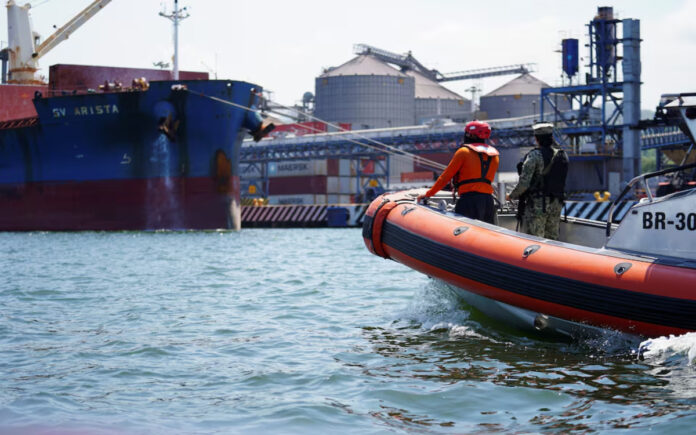Manzanillo: Mexican navy officials overseeing Manzanillo, the nation’s largest port, have voiced growing alarm over the surge in unregulated “dual-use” chemicals flooding into the country. These chemicals, initially intended for legitimate products like food and pharmaceuticals, are increasingly being diverted for the illicit production of methamphetamine and fentanyl, according to four Navy officials who spoke exclusively to the international news agency Reuters.
The officials highlighted a concerning trend where Mexico, already a major producer of fentanyl for the U.S. market, is now also exporting significant quantities of methamphetamine to Asian markets. They cited a notable increase in the importation of dual-use chemicals, predominantly sourced from China, which serve as critical precursors for synthesizing these synthetic drugs.
During a tour of the Manzanillo port on Mexico’s Pacific coast, Navy officials showcased seized shipments and emphasized the urgent need for government regulation of these chemicals. Large quantities of dual-use substances have been discovered in clandestine labs, reinforcing suspicions of their role in the narcotics trade, noted the Navy’s Chief Information and Risk Analysis officer, who requested anonymity due to security concerns.
Pointing to a specific incident in January, officials described the seizure of 88 metric tons of glacial acetic acid from China, a chemical essential in meth production. Subsequently, the importing company failed to substantiate ownership, leading to the impoundment of the shipment last month.
According to another Navy official, many of these seized substances are imported by companies based in Jalisco and Sinaloa, strongholds of Mexico’s prominent drug cartels—the Sinaloa Cartel and the Jalisco New Generation Cartel.
“It is urgent to regulate the entry of dual substances into Mexico because, without it, criminal groups dedicated to the manufacture of methamphetamine will continue to increase their production,” emphasized a third Navy official, also speaking on condition of anonymity.
Also Read | Argentina’s Salt Flats Test Cutting-Edge Lithium Extraction Tech
Despite repeated requests, the Mexican government has not yet responded to queries on the matter. Manzanillo port, handling nearly 60% of Mexico’s daily container traffic, subjects a small fraction of goods and ships to physical inspections, with heightened scrutiny applied based on intelligence tips regarding illegal cargo.
The rise in Mexico’s methamphetamine production, which has reportedly surged by 200% in recent years, underscores the port’s pivotal role in facilitating transcontinental drug trafficking. “Manzanillo’s strategic location serves as a gateway to ports across Asia, South America, and North America,” noted the commander of the Manzanillo Port Unit, stressing the critical importance of international cooperation to combat these illicit activities.



